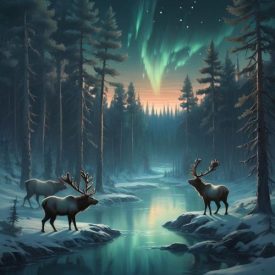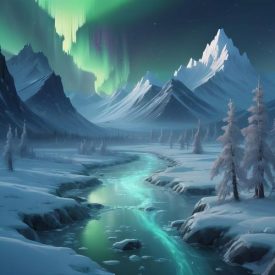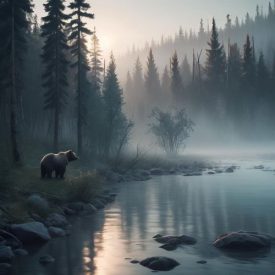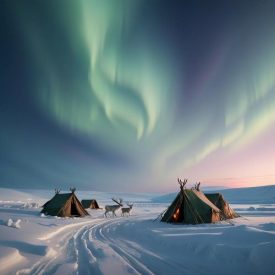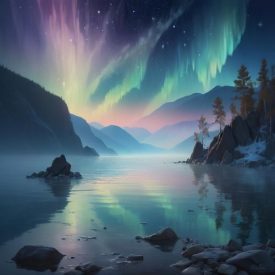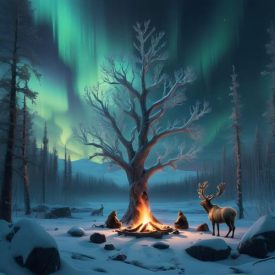Siberian Mythology
Siberian mythology forms one of the most ancient and spiritually rich traditions in the world, encompassing the diverse beliefs of indigenous peoples such as the Evenki, Sakha (Yakut), Khanty, Mansi, Chukchi, Nenets, and Buryat. Living across the immense tundras, forests, and mountains of northern Eurasia, these communities developed unique mythological systems deeply rooted in shamanism, animism, and a profound reverence for nature. Their myths reveal a world where spirits inhabit every river, tree, and mountain, and where shamans serve as mediators between humans and the unseen realms. Siberian mythology reflects not only the people’s relationship with their harsh environment but also their understanding of cosmic balance, ancestral wisdom, and the unity of life across all forms of existence.
At the heart of Siberian mythology lies the belief in a multi-layered universe composed of three realms — the Upper World of celestial deities, the Middle World of humans and animals, and the Lower World of ancestral and chthonic spirits. Shamans, known among the Evenki as “bugady” and among the Buryats as “boo,” act as intermediaries, traveling between these realms in trance to heal, protect, and seek guidance. The sky god, often referred to as Num or Buga in different traditions, represents creation and order, while the earth goddess — known as Mother Earth or Umai across cultures — nurtures life and fertility. Spirits of animals, especially the reindeer, bear, and eagle, hold sacred status, embodying protection, wisdom, and power. These beliefs reflect a worldview where the human soul is intrinsically connected to the spirits of the land, sky, and ancestors.
Each of the mythological traditions within Siberian mythology brings its own distinct stories and symbols. The Evenki, for instance, speak of a great celestial hunter and the world tree connecting heaven and earth. The Sakha (Yakut) people revere Urung Ai Toyon, the white creator god, and celebrate the Yhyakh festival, which honors the rebirth of nature. The Khanty and Mansi, peoples of the Ural region, worship Num-Torum, the supreme sky god, and tell legends of animal ancestors who founded human clans. The Chukchi of the Arctic coast believe in a balance between sea spirits, animal souls, and the forces of the underworld. The Nenets, nomadic reindeer herders, tell of Num and Nga, gods of creation and chaos locked in eternal struggle. The Buryats, closely related to Mongolian culture, blend shamanism with Buddhist influences, preserving tales of spirits inhabiting Lake Baikal, mountain gods, and protective ancestral deities. Though varied, all these mythologies share a core principle: harmony between humans, spirits, and the natural world must be maintained for life to flourish.
In modern times, Siberian mythology continues to influence cultural identity, environmental awareness, and artistic expression. Indigenous storytellers, musicians, and shamans are reviving ancient rituals once suppressed under modernization. Myths are being retold through films, literature, and digital art, allowing global audiences to rediscover the mysticism of Siberia. The ecological wisdom of these traditions — that every creature and element of nature has a spirit deserving respect — resonates deeply in an era of climate change and environmental crisis. Siberian mythology stands as a living reminder of humanity’s shared spiritual heritage, offering timeless lessons about balance, resilience, and reverence for the interconnectedness of all things.


